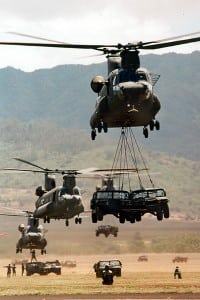
With a renewed and increasing troop presence in Afghanistan, the Army is having to reestablish logistics support capabilities it once had to supply distributed soldiers with fuel, food, ammunition and other supplies, according to a logistics officer who recently returned from a tour there.Col. Michael Lalor, commander of 1st Armored Division Sustainment Brigade stationed at Fort Bliss, Texas, said the unit spent most of its seven-month deployment reestablishing distributed supply stocks and resupply capabilities in austere areas of Afghanistan where…

 By
By 








